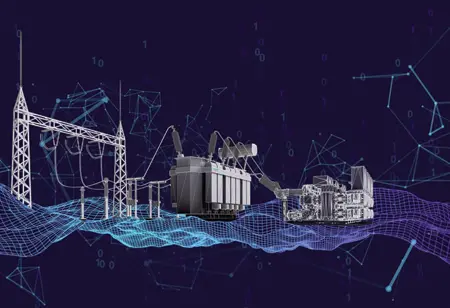Thank you for Subscribing to Electrical Business Review Weekly Brief
I agree We use cookies on this website to enhance your user experience. By clicking any link on this page you are giving your consent for us to set cookies. More info
Safeguarding Power and Performance - The Importance of Electrical Enclosures in the Electrical Industry
In the dynamic world of electrical business, electrical enclosures are critical in ensuring electrical equipment and components' safety.

By
Electrical Business Review | Friday, January 10, 2025
Stay ahead of the industry with exclusive feature stories on the top companies, expert insights and the latest news delivered straight to your inbox. Subscribe today.
Electrical enclosures are essential components in the electrical business, safeguarding electrical infrastructure's performance, reliability, and safety.
FREMONT, CA: In the dynamic world of electrical business, electrical enclosures are critical in ensuring electrical equipment and components' safety, protection, and performance. These protective housings shield sensitive electrical devices from environmental factors, potential hazards, and unauthorized access. This article explores the significance of electrical enclosures in the magazine Electrical Business Outlook, their impact on electrical infrastructure, and the key elements that define their importance in safeguarding power and performance.
The Significance of Electrical Enclosures
Electrical enclosures hold immense importance for several reasons:
1. Equipment Protection: They shield electrical devices from dust, moisture, and other environmental elements, prolonging their lifespan.
2. Safety and Compliance: Electrical enclosures promote safety by preventing accidental contact with live components and ensuring compliance with safety regulations.
3. Security: They deter unauthorized access and protect sensitive equipment from tampering or theft.
4. Organized Installation: Electrical enclosures provide a structured and organized environment for equipment installation.
Key Aspects of Electrical Enclosures
1. Material Selection: Enclosures are available in various materials, such as steel, aluminum, and plastic, catering to specific application requirements.
2. IP Ratings: Ingress Protection (IP) ratings indicate the degree of protection against dust and moisture, guiding enclosure selection for different environments.
3. Mounting Options: Different mounting options, such as wall-mounted, floor-standing, or rack-mounted enclosures, offer installation flexibility.
4. Ventilation and Cooling: Proper ventilation and cooling mechanisms maintain optimal operating temperatures within the enclosure.
Impact on Electrical Infrastructure
1. Protection from Hazards: Electrical enclosures guard against hazards like electrical shocks, short circuits, and equipment damage.
2. Reliability and Performance: Enclosures ensure consistent performance and reliability by safeguarding electrical components.
3. Redundancy and Backup: Enclosures provide space for redundant components and backup systems, enhancing system resilience.
4. Modular Expansion: Modular enclosures allow for easy expansion and modifications as electrical systems evolve.
Innovations in Electrical Enclosures
1. Smart Enclosures: Incorporating IoT sensors and monitoring capabilities enables real-time condition monitoring and predictive maintenance.
2. Customization and Design: Manufacturers offer customizable enclosures to meet specific industry or project requirements.
3. Energy-Efficient Cooling: Advanced cooling technologies reduce energy consumption while maintaining optimal temperatures.
4. Hybrid Enclosures: Combining different materials and technologies to create enclosures with enhanced features.
Challenges and Future Outlook
1. Rapid Technological Advancements: Adapting to evolving electrical technologies requires versatile and adaptable enclosure designs.
2. Space Constraints: As urbanization increases, designing compact and space-efficient enclosures becomes crucial.
3. Cybersecurity: Securing smart enclosures from potential cyber threats is a growing concern.
4. Sustainability: Incorporating sustainable materials and practices aligns with eco-conscious manufacturing.
Conclusion
Electrical enclosures are essential components in the electrical business, safeguarding electrical infrastructure's performance, reliability, and safety. From protecting sensitive electrical equipment to ensuring compliance with safety standards, enclosures play a vital role in power distribution and utilization. As the electrical industry embraces smart technologies and rapid advancements, innovative enclosure designs, energy-efficient cooling, and cybersecurity measures will be key focus areas. Addressing challenges and embracing sustainability will shape the future of electrical enclosures, ensuring their continued importance in the electrical business outlook. By providing robust protection and creating a secure environment for electrical components, enclosures will continue to be the guardians of power and performance, driving the electrical industry toward a safer and more efficient tomorrow.








